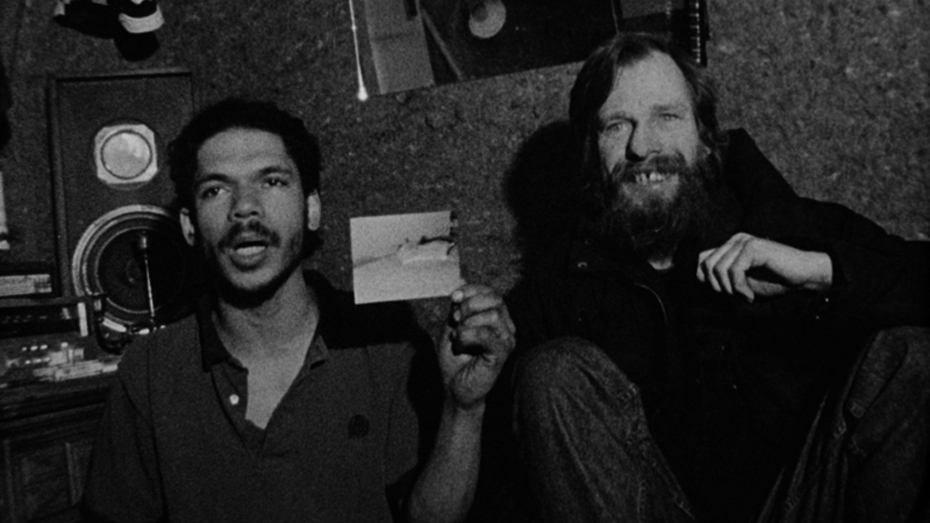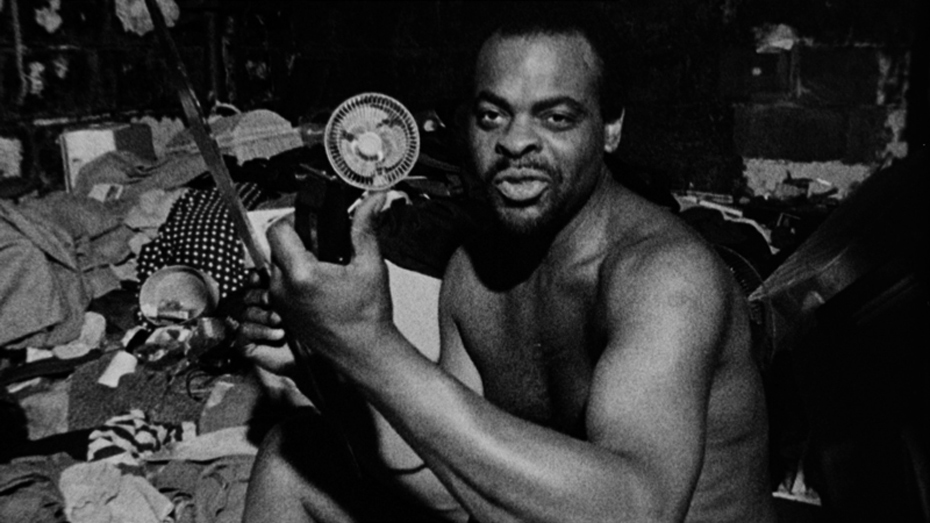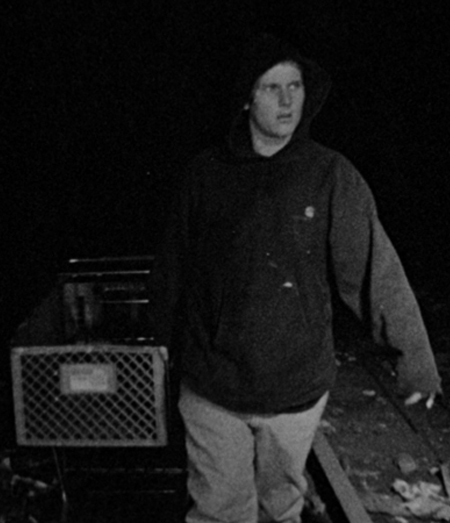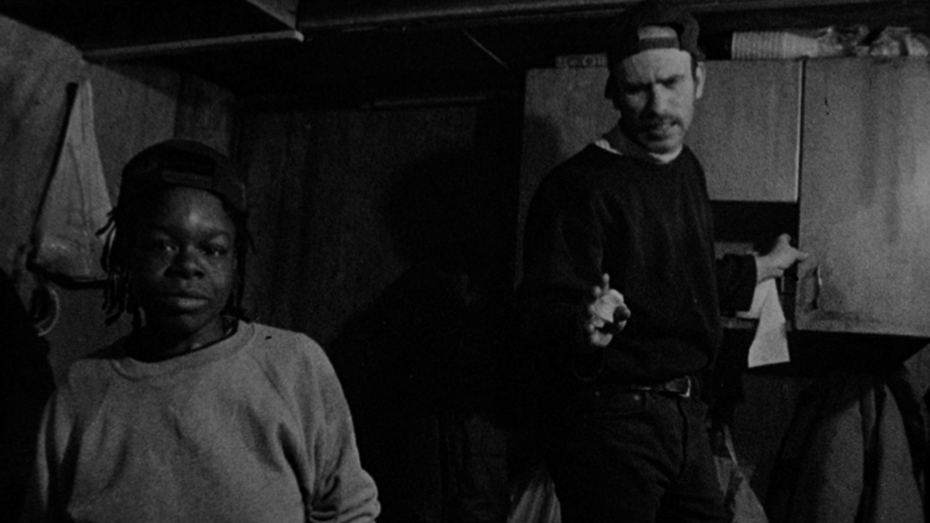The documentary filmmaker shares his experiences of living and working on the streets of NYC, and the difficulty of securing funding when you haven’t showered for several days

Marc Singer’s 2000 documentary Dark Days – recording the day-to-day lives of New York’s subterranean homeless community living in the Amtrak tunnels beneath the city’s bustling streets – is one of those rare films that has the ability to make you completely re-think your opinions, attitudes and preconceptions about people. Shot in grainy 16mm black and white, the film – Singer’s first and only so far – shows tunnel residents as they struggle to survive, and reveals the stories behind how they came to live underground, some of them for as long as 25 years.
Since Dark Days walked away with three major prizes at the 2000 Sundance Film Festival (the only documentary to ever do that), the film has boomeranged, coming into new relevance following the financial crisis that saw a spike in homelessness across America and the West, and again in 2014 with its cinema re-release.

Betty Wood: Before you began making a film, you were already living down with the Freedom Tunnel Community – how did you find yourself there?
Marc Singer: I was living in the East Village in NY. Now it’s quite a cool neighbourhood, but back in the early 90s, it was quite a lot rougher, and there were a lot of people were living on the street. I became fascinated by how they lived and what they did, how they survived: where did they go to the toilet? Where did they eat?[/one_half]I started hanging out with a number of people, then became good friends with one guy in particular – he took me under his wing and really taught me what it was like to live on the street. He would talk about the tunnels when things were bad, like whenever it was raining and he was getting wet. He always described it as an amazing place, yet he was scared to go in there (“Oh no, no, I can’t do it, I can’t do it – they eat you down there”). There was a lot of mythology surrounding the tunnels and if you asked the majority of people living on the street if they’d live down in the tunnels, they’d say “I’m not going down in the tunnels! It’s dangerous.”

Betty: It’s one thing to be curious, another to go and live down there…Marc: I was 21 at the time and a lot more ‘unafraid’ than now. I am now I’m older and wiser. I started exploring the tunnels; after about a month I found the tunnel I ended up staying in.
Once I got there, it just fascinated me, how do you live in a tunnel – where’d you get wood [or electricity] or how’d you ? There was a wide variety of people there, from very old to very young, every race, every type of class: there were people who were very well off for being homeless and living in a tunnel, and then people who were very poor. It had everything I was looking for.
Betty: Did the experience of filming change the mood amongst the community at the time? Did it become a ‘job’ for them?
Marc: In a way – but you still had to survive. It wasn’t like a catering company turned up; you still had to go off and find your food; you still had to do your day-to-day hustle (whatever you would do to make money). But it did change the mood in the sense that everyone felt that they were making something, we were working towards a positive goal, which you don’t normally have when you’re on the street – you’re working towards surviving. This was completely out of the norm.
There were a lot of people in the tunnel, and it took a while before everyone knew we were making a film, and so it may have been strange for other people seeing a film crew at 4am in the morning lighting up some weird thing to film…Betty: It was quite a lengthy process in terms of filming to editing to release – five and a half years from start to release – were there moments you worried it’d never see the light of day?
Marc: There were times when I didn’t know if I was going to be able to make it, and I didn’t know if I was going to be able to recover from it. If you get on the street, it’s really difficult to get off without a lot of assistance from outside the street to help you navigate your way back into the real world.
When it turns around and you’re in that position, and it’s not by choice – the tunnel was all by choice, I hadn’t given up everything at that point – it was really difficult. There were times where I didn’t know how I was going to do it, get out of this situation and raise money for a film at the same time. I mean, you might not have taken a shower for a few days, and you’re trying to convince somebody to give you thousands of dollars for a film. You’re not a safe bet.
What was the turning point?
Marc: An Australian guy called Nicholas Morley. I met him in 1998, and he said, “Come over to the house and me and the wife will cook you something to eat”. I basically went there every day. He introduced me to his friends, and from there I met a guy called Ben Freeman, who ended up helping to find all of the rest of the money. Nick was the catalyst. Without him, I don’t know when it would have got done.
Betty: There’s a real openness between you as filmmaker and your subjects – you talked about some very intimate topics: death, drug abuse, divorce. Was it cathartic for them to talk into the camera?
Marc: I don’t think they gave a shit a camera was there. I think it was cathartic to talk about it, to cry about it. Some said, “Man, I haven’t told anyone that”. But those sorts of conversations came out of my journey through it: I went into the whole project from a naive place and being really green I went out onto the street thinking it was one, way, and it was completely different.

I went in there feeling very sorry for people, then you learn why people are on the street, and you think, “Fuck you”. You put yourself in this situation, in some ways. Some people. Right? Do a lot of fucking drugs, drink yourself onto the streets. You can find yourself turning on people internally – when that person moans, you’re like – “Deal with it, you did it to yourself”.
It takes time to go through this whole cycle where the more time you spend with them, then you look a little bit deeper and then you find out why that person went off the rails in the first place. You come full circle. You might get-angry with them again, but you start looking at it in a slightly different way than you would, not knowing their history.
Betty: The community was obviously much larger than the small group of people you document in the film: how did you work out who to include and speak to?
Marc: It was quite natural. You talk to your friends, take the path of least resistance. And there was a few people I would film that weren’t really close, but ended up becoming friends with. There were a lot of people we filmed that never make it into the film, but I just couldn’t cut it together. The footage we were left with dictated who made the final cut. We filmed a lot of women, in the film you see just Dee, but there was quite a lot more. It wasn’t for any other reason except that I just didn’t film enough at the right times of the right things.
Betty: For the film’s 10-year anniversary in 2010, you went back to the tunnel (which has changed massively since your original film). You also did an update on where people were, 10 years down the line… Are you still in touch with them?
Marc: Some people I talk to quite regularly, once a month or every few weeks. In some cases, it could be a couple of years, Some people passed away over the years, they were 60 when I met them in the tunnel, and that was 20 years ago.
In general, everyone that got out is doing pretty good. Some people have gone up in different ways – Dee I spoke to last week. I saw her for the first time in maybe six years, I had a coffee with her. She just called me up, out of the blue.
Betty: You were working on a film about an American Platoon on recon missions, which you abandoned due to lack of narrative arc. Is that a decision you stand by, or is there any regret?
Marc: It wasn’t my decision, I thought it would have been a great film, but I needed more, I needed to keep deploying until I got what I was looking for, which I was happy to do. I had a great time doing that. But it didn’t happen.
Betty: Now you’re in the food industry: is film done for you?
Marc: Never say never. I have a company called Filthy Food – we have a line of garnishes, olives, cherries, anything you put into an alcoholic drink!
If filthy does well and I can sell it, I’ll probably go back to film. But you’ve got to have control over it: that’s the reason Dark Days worked. It was my responsibility, either way, good or bad. You make those choices – you’re not changing it for a specific target audience, you’re not thinking of the goal, you’re more concerned with the journey. The person who controls all of that is the person who controls the money. So I’d rather wait, and if I can afford to do one, I’ll do one. And if I can’t, hey, I’m fine! There are so many things I want to do with my life…
Dark Days is out in selected UK cinemas, and available on DVD and digital download from 3 February 2014. Click for more information




